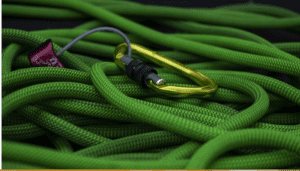
How to Choose a Climbing RopeHow to Choose a Climbing Rope
Climbing mountains, rocks, or even walls is an exciting activity and fun. However, you need the right gear to do it. One of the essential things is climbing rope. But when you get into climbing seriously, you will be surprised to find there are so many types of ropes, and choosing the right one for you can be so overwhelming.
Here are some of the factors to consider when buying a climbing rope:
The Length
 You need to find out at your crag if a 50m rope is enough. The 50M length used to be the standard. However, there has come new lengths like 60m, and even 70 m have become popular. It would help if you avoided the risks of starting a route and using rope lengths that are too short for it. One of the dangers is that you may not reach the anchor, and another is that your belayer could lower you up to the end of the rope. You must always find out the route length and get a rope length to match it. Besides, ensure you make a knot at the end of the rope.
You need to find out at your crag if a 50m rope is enough. The 50M length used to be the standard. However, there has come new lengths like 60m, and even 70 m have become popular. It would help if you avoided the risks of starting a route and using rope lengths that are too short for it. One of the dangers is that you may not reach the anchor, and another is that your belayer could lower you up to the end of the rope. You must always find out the route length and get a rope length to match it. Besides, ensure you make a knot at the end of the rope.
The Diameter
 When considering rope diameters, you try to trade off weight and durability. The skinnier ropes are less durable and unforgiving. It would be best to ensure your first rope to use in early lead climbs, and top roping are quite beefy –about 10 to 10.5mm. That way, it will last longer, tolerate abuse, and not cut over the edges. As you become more skilled, you can choose skinnier ropes.
When considering rope diameters, you try to trade off weight and durability. The skinnier ropes are less durable and unforgiving. It would be best to ensure your first rope to use in early lead climbs, and top roping are quite beefy –about 10 to 10.5mm. That way, it will last longer, tolerate abuse, and not cut over the edges. As you become more skilled, you can choose skinnier ropes.
Dynamic vs. Static Ropes
Although you choose between dynamic and static ropes, you ought to always pick a dynamic rope for climbing. The beauty of dynamic ropes is they are made to stretch if a fall happens to ensure your body and the anchor are not bearing the shock. With most of the dynamic ropes, their dynamic elongation is 30-40%, and this is the typical extent of stretching in a fall. Furthermore, the dynamic ropes have a static extension of 5-10%, which accounts for a stretch when the rope is weighted.
Conversely, static ropes are used for hauling loads, rappelling, performing rescue works, building top-rope anchors, and getting cars from ditches. These ropes stretch so little (no more than 5%). When you are climbing using these ropes, they could snap you the same way a twig would snap if you fall.
…